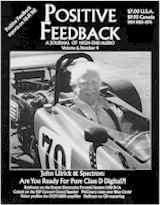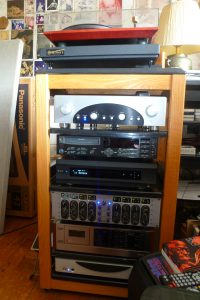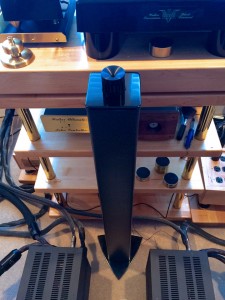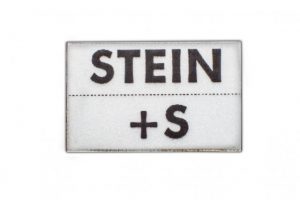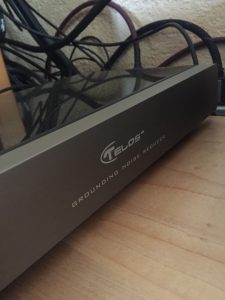A general rule, which I try to follow selecting audio products for my tests and when performing the test boils down to credibility. On the one hand, my own, ultimately, what I write will stay online "forever" and it attests in my favor or against me, and on the other hand it defines a company whose product I decide to listen to. For both sides of this coin to be equally trustworthy I am looking for information about the brand and product. I talk to—if possible—with its designers and / or company owners. I read tests, descriptions, interviews and so on.
Such approach surely gives some advantage to the well-known, widely recognized, valued companies, one can find tones of information about. On the other hand, it makes it much harder for new, and / or small manufacturers. It gets even more expensive when such company comes up with some novelty, something I unheard-of. And when it comes to a product nobody ever heard of before, the problem grows to such an extent that getting involved/interested in such company and its product becomes sort of "leap of faith".
In the particular case of the Polish company Yayuma it bit simpler, because during fifteen minutes, I had for them during Audio Video Show 2016 I met competent people, received credible explanation of their product and I heard the sound, which seemed to me at least interesting. All that together managed to get me seriously interested, not to say fascinated, also from a cognitive point of view. The Best of the Best Audio Video Show 2016 Award was therefore a formality.
PONA sound
Pure Original Natural Audio sound
The Yayuma crew, from the left: Jarek Proksa - Jurek Pona - Marcin Skrzypczak.
The quite exotic name Yayuma has Polish roots, although it is stylized – it was formed from the first two letters of the names of its creators, Messrs YA-YU-MA, ie. Jarek Proksa - Jurek Pona - Marcin Skrzypczak. Gentlemen Jarek and Marcin ran previously a trading company, which they left two years ago to deal with the implementation of a production conceived by Mr. Jurek, who in turn dealt with the automation of biological processes. The opening motto on their website reads, "because of the passion for physics, because of the passion for music," and then "we take care of technology but we are fascinated by PHYSICS—mother of SOUND". These are nice statements but what's important is that in this case are more than words.
The heart of Yayuma is Mr. Jurek Pona, an engineer, and privately fan of flying. As he says, the idea that became a core if the whole company, just came up one day. It was so simple that he initially rejected it as too obvious. Once again, however, the reality surpassed wildest imagination—no one had thought of it before the way he did. To the extent of Yayuma applying for patent on a mathematical model, that their signal processor is based on.
It's about modification of the audio signal. The idea, as I said, is very simple, and perhaps that's why nobody had thought about it seriously before, and we all accepted the present state of affairs. Mr. Jurek asked himself, why is an audio signal captured by the microphones reproduced by loudspeakers without any processing (except, of course, amplification). Intuitively, it seems to us that this is just normal—microphone's membrane vibrates to the rhythm of air pressure changes, converting an acoustic signal into an electric one, and a driver does the same, but opposite, ie. converts an electric signal into the sound. Along the way, the signal is amplified, its parameters are changed, such as its tone and dynamics, usually it is also recorded. Piece of cake.
But, says Mr. Jurek, the microphone is an element recording velocity of a diaphragm movement while a driver is trying to recreate a position of a diaphragm. For the former the amplitude of a signal depends on how quickly the membrane vibrates—the faster the movement the higher the amplitude. The driver, in turn, vibrates proportionally to the amplitude of the signal. As long as we measure these elements using a sine wave, this difference does not matter. However, if we take into account the fact that the audio signal is actually a repeatedly superimposed sine waves, and the signals of different shapes, including pulses, we shall understand that the signal at the output of a signal, reproduced by a driver has a different shape than the output signal of the microphone.
In short—details and subtleties are masked, and levels of various parts of the band are changed. To compensate that, engineers in the recording studios use a frequency correction. In this way they restore the "original" tonality of the signal that was "heard" by the microphones (that concerns also electric and electronic instruments), but the signal finally played by loudspeakers in our homes is different, deprived of some information. That's the point—signal is "deformed" only during playback. Before signal is delivered to loudspeakers connectors it is complete, it includes all the information that are later lost.
The idea was simple—to come up with an algorithm that would translate a "velocity" signal into one that could be properly interpreted by a driver (in a loudspeaker or headphone). To succeed Mr. Jurek wrote a mathematical model of a human ear and of a driver. Based on these he wrote an algorithm named after him—the PONA sound. The company materials translate this acronym to Pure Natural Original Audio sound, but it is clear it was named after its creator.
Knowing all this we have to remember first of all, that the ASP has a different function than the Accuphase DG-58 and Ancient Audio P-3 also the version with a headphone amplifier P-1). It does not correct anything, it doesn't change the frequency range curve not the phase. Its only role is to "translate" the "velocity" signal to one that is reproduced through the speakers. From the systematic point of view Yayuma is not an "equalizer" but an "interface".
Awareness Line ASP 01
The information given above are just a small part of what I heard about the product and what I read in patent's description. However, I hope that you already understand what this device is - an analogue sound processor that minimizes the error of a signal conversion from what is registered by a microphone to what a driver ultimately reproduces. It should be placed in the signal's path between the source and an amplifier (or preamplifier) or between preamplifier and power amplifier. The signal is NOT converted to a digital form, the only digital element of the device is the control circuit, hence the name of the processor: ASP (Analog Signal Processor).
It's a low profile device featuring a solid aluminum chassis, allowing user to adjust some parameters. For example, user may choose to turn on an analog system that eliminates excessive sibilance—the so-called. de-esser, a key tool in mastering studios. One can also turn the DC signal lock on, that should not appear on discs. When it is present, the driver's membrane is constantly deflected to one side, so that the sound is distorted. Though it is elementary knowledge, I've encountered this error on a surprisingly large number of discs. User decides whether to use any of these modifications "by ear."
The menu is displayed on a big, monochrome display, and the changes are carried out using a toggle switch. In addition to the above mentioned modification user has at his disposal an adjustment of the output signal and the depth of the processor's operation. This seems to be crucial to me. When you listen to Yayuma in a controlled environment, you will realize that some recordings with it in a system seem to have much more information at the top and bottom of the band, what you might perceive as a brightness and emphasis of this part of the range. Its level depends on how strong a compression and tonal equalization was introduced by sound producer—the greater it was the smaller the effect introduced by the processor. It is actually explained in the manual:
The algorithm we used to retrieve information exposes the excessive use of compression and equalization of the recordings. All works prepared without the use of equalizers and compressors (or at least with minimal compression ratio) when listened using our processor will show the wealth of previously unheard sounds, taking listener much closer to the musical truth. [...]
ASP YAYUMA is equipped with a variable depth of processor's operation. This feature is useful when listening to recordings distorted using EQ. The recordings realized without the use of EQ allow user to set the depth to the maximum, for all others this function should be used at the discretion of the listener.
The processor is supplied in a sturdy box together with a power cable, XLR cables and operating manual stored on a nice thumb-drive. It also contains some tracks recorded without EQ, with a minimal level of compression. In turn, on the included CD one finds a 1 kHz, 0 dB signal, that allows user to set the input sensitivity of the device.
The designers told me that plans for the future include designing their own DAC, launching a less expensive version of the processor, the implementation of the mass production of high-end headphone amplifier, and ultimately - selling license for PONA sound technology. An important step may also be entering the audio-pro market. The latter may be particularly interesting, because the processor is a ready tool for sound engineers. It is possible to record the audio signal with an algorithm that eliminates the need for the usage of the processor in the system. The digital signal must however be recorded at 192 kHz sampling frequency or higher.
Unless…
It would be amazing to be able to play the audio file, which would cause a PONA sound logo to lit up in our DAC. I guess you remember the HDCD format? The famous green LED or a logo on the display (at least in Linn CD 12 and Naim devices it was green) gave incredible satisfaction to the users. Here and now a toggle switch turning on and off the processor would suffice. I would suggest introducing some sort of control, a toggle switch or a knob that would allow user to adjust the depth of the processor operation. This function is, of course, accessible from the menu, but …
I also think that it would be justifiable for the higher model to use an OLED display, which would feature a bar graph used to control the input sensitivity. The test version featured rectangular LEDs, straight from the 1980s, which slightly differed stylistically from the artistic project of the device.
And anyway, the digits on a display could be bigger, as already from a 2 meters distance I was not able to read them, which makes using a large remote control bit difficult. Luxman solved this issue in a great way, giving users a handy tool called the "zoom"—pressing a button causes main information being displayed in twice the normal size (more HERE; Polish).
Having said that let me summarize this part. The device is well thought-through and well-made. It is definitely not a "working prototype", but a patent protected device, the YA-YU-MA gentlemen dedicated several years of their life and invested much of their own money.
TEST METHOD
The ASP 01 is, from the audio system point of view, an interface. During the AVS, as well as at my place, it was presented working in a "bypass" mode. In this mode signal bypasses almost all circuits, except for the output buffer. Compared with the direct connection this mode requires an additional pair of interconnects. This means that it modifies signal even if the processor is not active. So in order to really check how the device affects the sound I compared with the processor and without it (meaning completely out of the system), without using the bypass mode.
I listened to the Processor in three systems:
- the reference one between Ancient Audio Lektor AIR V-edition CD Player and Ayon Audio Spheris III preamplifier,
- with Kondo OnGaku integrated amplifier—ASP 01 worked between Ancient Audio Lektor AIR V-edition CD Player and the said amplifier,
- in a headphone system with Bakoon HPA-21 and HiFiMAN HE-1000 V2 .
The device was placed on the Acoustic Revive RAF-48H platform, and on top of it I placed two passive EMI/RFI Verictum X-Block filters. To connect with power I decided to use the Acoustic Revive Power Reference Triple-C. It was an A/B/A comparison with A and B known. I used both, 1 minute long fragments as well as full albums.
Let me add that during the whole test I used the de-esser function, because without it most tracks sounded too bright. In a perfect world sound engineers would have used this function while working on these albums and in turn I wouldn't need to use it.
SOUND
Recordings used for the test (a selection):
- Cantate Domino, cond. by Torsten Nilsson, Oscar Motet Choir, Proprius/JVC Victor Company XRCD 7762, XRCD2 (1976/2003)
- Andrzej Kurylewicz Quintet, Go Right, Polskie Nagrania "Muza"/Warner Music Poland 4648809, "Polish Jazz vol. 0", Master CD-R (1963/2016); review HERE
- Arne Domnérus, Jazz at the Pawnshop. Vol. I, II & III, Proprius/Lasting Impression Music LIM UHD 071 LE, 3 x UltraHD CD + DVD (1976/2012)
- Depeche Mode, Wrong. Remixes, Mute Records BONG40, maxi SP CD (2009)
- Fisz Emade Tworzywo, Drony, Art2 Music 26824180, CD + SP CD (2016); review HERE | more HERE
- Frank Sinatra, Sinatra Sings Gershwin, Columbia/Legacy/Sony Music Entertainment 507878 2, CD (2003)
- Nat ‘King’ Cole, Love is the Thing, Capitol/Analogue Productions, CAPP 824 SA, SACD/CD (1957/2010)
- Nat ‘King’ Cole, Penthouse Serenade, Capitol Jazz/EMI 94504, "Super Bit Mapping" CD (1952/1998)
- Paradox, Drifting Feather, Polskie Nagrania "Muza"/Warner Music Poland 9 59035 7, "Polish Jazz | vol. 26", CD (1971/2016)
- Pet Shop Boys, Super, Sony Music Labels (Japan) SICX-41, CD (2016)
- Rosemary Clooney, Rosemary Clooney sings Ballads, Concord/Stereo Sound SSCDR-007, "Flat Transfer Series", CD-R (1985/2016)
- Zbigniew Namysłowski Quartet, Zbigniew Namysłowski Quartet, Polskie Nagrania "Muza"/Warner Music Poland 9 59036 1, "Polish Jazz | vol. 6", CD (1966/2016)
The Yayuma processor is so different device, even from sound processors that we already know that to understand what it actually does one needs a long time. A short demo, that I also witnessed during the AVS, will give you a general impression of change, but will not tell you what exactly this change is. I also think that this is the type of product hat requires some knowledge and experience to assess it properly. If you do not have one and/or the other I would propose to approach this device as the proverbial "black box", limiting the assessment to either "like" or "don't like" choice. But this will not be an objective evaluation, but only impressions about the sound.
The first observation after turning ASP on was as if someone raised the level of treble and bass. The impression is very strong. Therefore, for the first few listening session when comparing the sound of a system with and without the processor I instinctively turned the volume down when the processor was in use (let me remind you that I did not use the bypass function—the device is not that transparent). It was not a big adjustment—maybe 1 or 2dB—but every time it seemed necessary, despite the fact that I earlier calibrated the gain of the device.
After a few days I sat for the next session and something has changed - since then I regularly turned down the volume by 1 or 2 dB, but this time when I listened to the system without the processor. I think I just got used to the change of perspective and slowly I began to understand - even unconsciously – what was going on, as if I finally started to get rid of toxic habits. Ultimately the situation clarified and I could definitely say that the treble with the processor was quieter, more delicate and the bass more powerful, but less contour, usually also less artificial. When one uses the process one tends to turn the volume up because the sound less tiresome, even when the music plays loudly.
The device changes the sound significantly. First of all it modifies the perspective from which we see the events on the stage. With large ensembles recorded in the concert hall or in church, Cantate Domino is a good example, everything was presented a little further away from me, the singers seemed to be all recorded from a greater distance. As if someone had placed the microphone further away from them. Without the processor sibilance sounded separately from the voices, with the processor they were embedded in the vocals, they were never heard separately.
It was easy to notice that the processor worked best with high quality material, as well as with the older recordings—frankly speaking, the older jazz recordings I played, the more impressed I was with the processor's operation. The sound with it was less "plastic" and less artificial. It is, of course, about more pointed attack and better resolution, but I did not perceive it as a more detailed presentation. On the contrary—probably a large part of the listeners, especially if they won't have enough time for the accommodation, will say, that with the processor there is less information. That the sound is more withdrawn.
It's not true. The truth is that this processor extracts all these small changes, transitions, and so on, which makes the sound smoother, more consistent, more like what we can hear during live concert where we never "see" musicians with our ears, simply because we can see them. The sound and mastering engineers change the sound so that it becomes more "visible", compensating for the lack of visual stimuli. When this is done properly, it fulfills its desirable role. The Yayuma processor does something else and better—it restores the sound to the "ears only" state and yet the presentation is more convincing, more emotional, restoring a realistic perspective. That's how the new Polish Jazz remasters sounded like, or the productions of the records labels such as Proprius, and finally also recordings of Sinatra, Nat 'King' Cole and others.
With commercial recordings in which everything was raised to 0 dB, and even distorted—for example in Pet Shop Boys' Super—the situation is different. Here a withdrawal of treble was really strong as if the mastering engineer went nuts, and the processor while reversing that changed the tonal balance too. The bass was strongly emphasized, and sometimes even obtrusive. Reduce the impact of the sound system to 6dB helped, but only partially. Perhaps the recordings prepared using so much manipulation benefit from lower resolution that obscures their issues.
Downsides?
An integral part of life is the balance of profit and loss. Also in this case we have to answer ourselves the question, whether what we loose adding one more device to our system is worth sacrificing for the upsides of this solution. I guess it is clear that each device changes the sound is some way.
With the ASP 01 the system becomes slightly less resolving. This probably can not be avoided, even in the most sophisticated product. The change is not large, and will be noticeable only in the top systems, but you need to know about it. Secondly, to some extent palpability of the sound disappears. I described it as a larger perspective. These recordings that delighted us with the amazingly "present" vocals, almost "tangible" texture, where we had something within arms length, won't do that anymore. Their perspective will be more realistic. If we listen carefully, we will realize that this tangibility was actually an artifact resulting from the signal manipulation. But still—many music lovers love such presentation and find it extremely attractive.
Also, not with every recording the processor's operation will translate into a better sound. As I said, the not-so-perfect realizations sounded better without Yayuma, because despite losing some of this natural velvety softness of the sound provided by ASP 01, the tonal balance and bass attack were better in uncorrected form.
It is a truly revolutionary device. Its strength, but at the same time its weakness is that it removes from the sound delivered by our loudspeakers or headphones (I strongly recommend such an experiment!) elements masking the actions of sound engineers—the company papers are right about that. So this is not a universal product, and although the problems which it solves, are the most universal ones, not everyone is going to need it.
Summary
The answer to the question of whether the Yayuma ASP 01 changes the sound is very simple: YES, it does. The second question is whether this is a positive change – and the answer is: YES and NO. But the fundamental question, as it seems to me, is: whether the processor is worth its price, ie. whether one should even bother to test it in one's system? After the time I spent with this device the short answer is: it depends, but in my opinion, everyone should at least listen to it. Whether this is something for a particular music fan will depend on what he expects from the system, what kind of music he listens to, and how experienced he is. And it's obvious that some might say that they don't like what the ASP 01 has to offer and it doesn't make them fools—that's absolutely not the case! In this particular case, I bow deeply before any independent, conscious choice.
Why? Because listening to the music is a very intimate, emotional experience. So you should not convince anyone, how he should listen to it. If someone thinks that the processor changes the sound in a way that he doesn't like, he should spend his money on something else—a trip around the world, a new car, etc. But if someone hears this "new" sound and understands it nothing else will matter except for money one has to spent to buy this device. If we accept this new perspective it will allow us to go even deeper into the music, finding new layers of emotions we previously were unaware of. The jazz from the 1930s and 1940s sounded with the processor sounded wonderfully, and so did good jazz and classical recordings prepared more recently.
It is a product that brings real change to the world of audio and if it is widely accepted in some form, it will bring us closer to the "absolute sound".
Price (when reviewed): 25 000 EUR
YAYUMA audio
sp. z o.o. ul. Grunwaldzka 83/4
43-600 Jaworzno | Polska
MADE IN POLAND
Provided for test by: YAYUMA audio
Text: Wojciech Pacuła
Images: Wojciech Pacuła
Translation: Marek Dyba


















